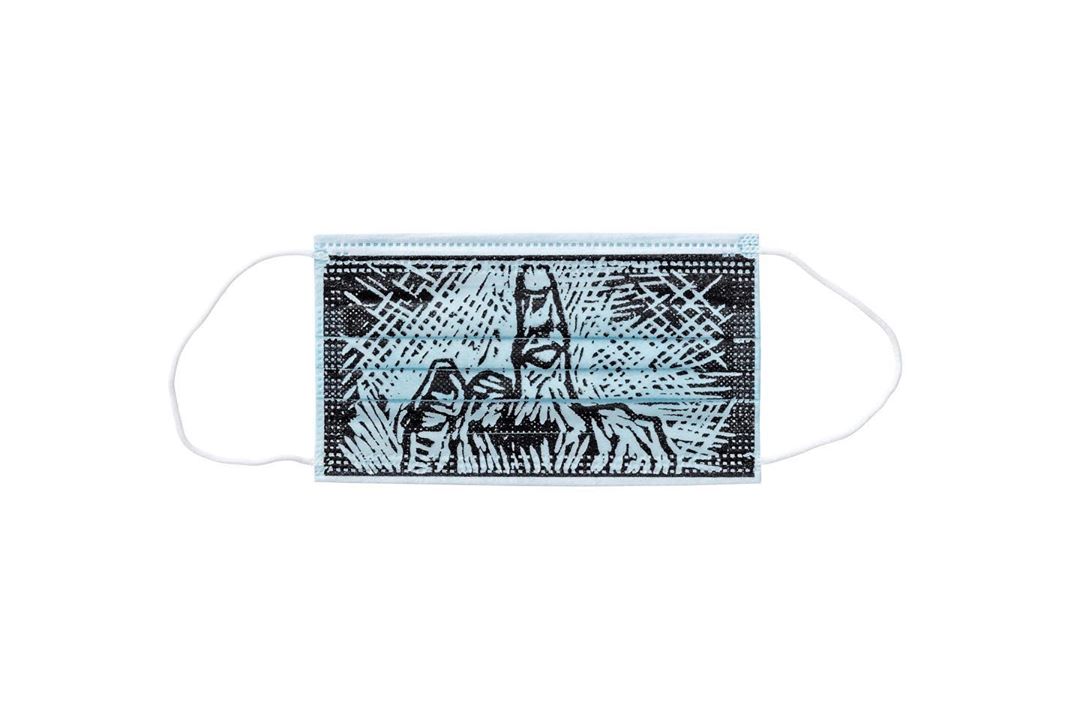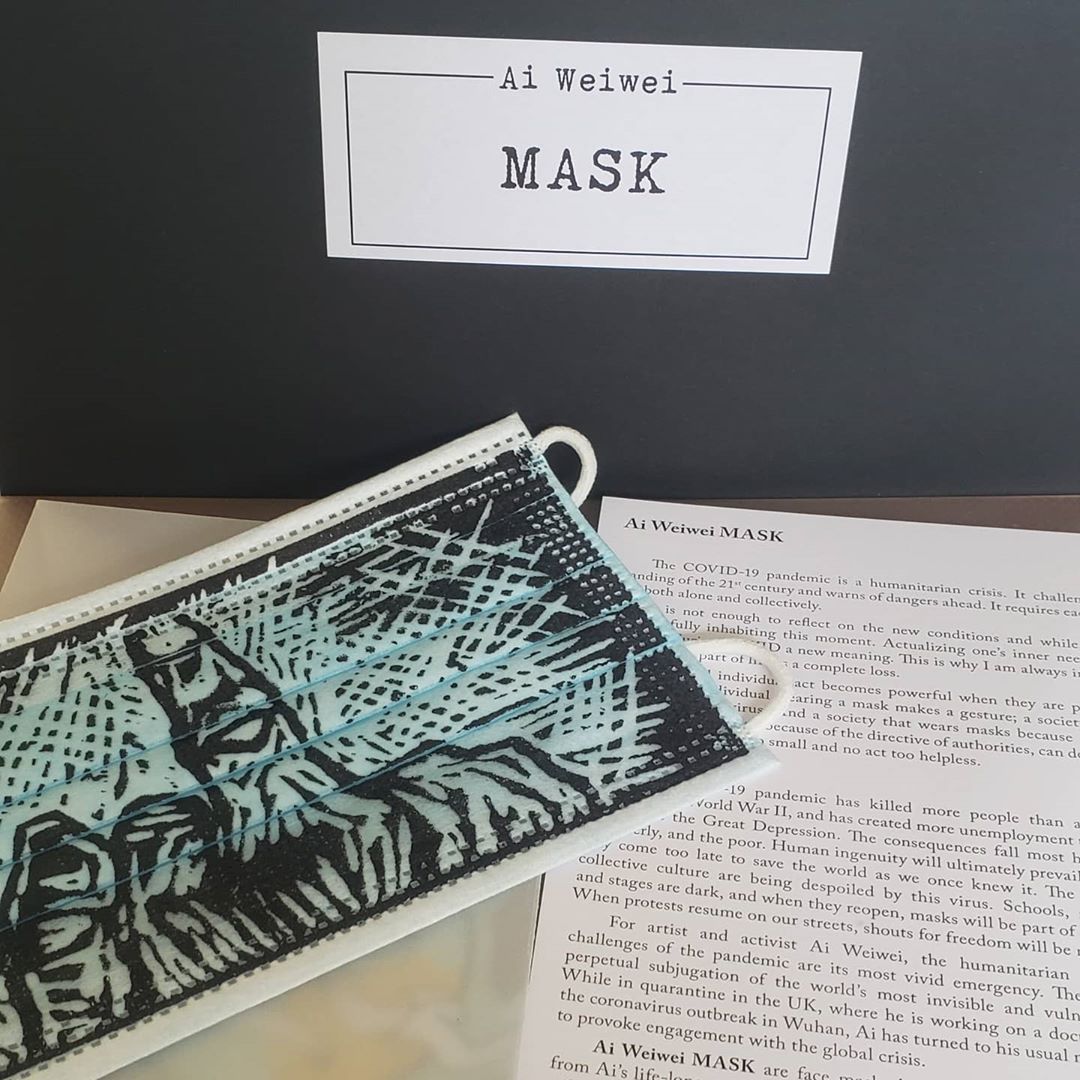Virality as Metaphor and Agent: Susan Sontag’s Illness As Metaphor in the Era of Covid-19
By Kaitlin Hao

The "Ai Weiwei MASK" art project was launched on eBay for charity on May 27. Within one month, the campaign sold 22,528 pieces, raising a total of USD 1,432,700. Image via the artist’s


Have you ever heard the phrase “that’s cancer” or described something as spreading “like a plague”? Have you ever felt that using illness-related metaphors, such as comparing the virus to a war, or referring to popular online content as “viral,” is quite odd, or even insensitive? In 1978, Susan Sontag released her seminal work of critical theory, Illness As Metaphor, which made a case as to why illness should not be a metaphor. For Sontag, “the healthiest way of being ill” is to resist metaphoric thinking, which imbues the illness with meaning and connotations that in turn place emotional and cultural pressures on the sick. Despite Sontag’s warnings, illness metaphors have become so colloquial that they barely give us pause, even amid a pandemic. What do these metaphors convey that we find so crucial? What do they reveal about what we value, what we fear, and how we relate to each other?
The illness metaphors that Sontag analyzed provide a foil for today’s virality metaphors. She mostly examined 19th and 20th-century Euro-American novels and poems, in which illness metaphors represented binaries of good and evil. Heroines fell ill and died, their struggles with illness proving their virtue or redemption, or villains contracted diseases as punishment for their moral corruption. In contrast, the contemporary understanding of virality—of how a virus hijacks host bodies in order to replicate itself at out-of-control speeds—offers more complex ideas about ecology and networks, in which good/evil is irrelevant, and connective systems and infrastructures are more significant than the individual. “Going viral” attributes more power to the metaphorical virus—the online content—than humans, as people are only significant for their role in transmitting the viral posts; their individual identities and moral constitutions are irrelevant.
What happens, though, when real and metaphorical virality interact? When misinformation about the virus goes “viral,” resulting in further spread of Covid-19 and bringing about actual death, the boundary between metaphorical virus and actual virus is blurred. Although Sontag’s resistance to metaphorizing illness out of respect for the afflicted is sobering, especially during a pandemic that has already killed more than 730,000 people globally, it is worth examining what Covid-19 illuminates about our networked reality—where material and virtual flows are so entwined—as encapsulated in the virus as metaphor.
As a blatant example of internet virality that exacerbates actual virality, every time United States president Donald J. Trump sends a Tweet or makes a widely shared speech replete with misinformation about Covid-19, such as suggesting that bleach can be ingested to prevent infection or underplaying the importance of wearing face masks, he potentially causes real health risks. Moreover, Trump has repeatedly turned the illness into metaphor, employing precisely the harmful, binary, blame-seeking rhetoric condemned by Sontag. He oversimplifies the virus as a war between good and evil, laced with racist undertones, comparing its spread to the Japanese bombing of Pearl Harbor and the 9/11 terrorist attack by al-Qaeda. Furthermore, by referring to Covid-19 as the “Chinese virus” and the “kung flu,” he directly racializes the virus, identifying it with an Asian body. Again, these widely circulated descriptions have real-world consequences. In Trump’s schema, where the spread of Covid-19 in the US is the sole fault of China and Chinese people, those who contract the virus are victims not of the US’s poorly managed coronavirus response, but of an attack by an evil other. This twisted reasoning fails to promote the collective responsibility toward public safety needed to “flatten the curve,” while also stoking anti-Asian hate.


Packaging of "Ai Weiwei MASK." Image via
A case where internet virality was used for good in the fight against the coronavirus was Ai Weiwei’s face-mask charity campaign. The world-famous artist-activist collaborated with eBay and Guggenheim curator Alexandra Munroe to produce and sell limited-edition face masks in order to raise funds for Covid-19 relief efforts by Human Rights Watch, Refugees International, and Médecins Sans Frontières/Doctors Without Borders. Promoted online by the participating charities and major news media outlets, such as CNN, The New York Times, and The Guardian, the project’s virality can be mainly attributed to the broad accessibility of the eBay for Charity platform, which combines e-commerce tactics with charitable giving. Over the course of a month, Ai’s studio in Berlin produced and sold 22,528 masks and raised USD 1,432,700. The sought-after masks were printed with stark, black motifs from Ai’s iconic works, such as the porcelain seeds from the large-scale installation Kui Hua Zi (Sunflower Seeds) (2010), and the raised middle finger from his photographic series Study of Perspective (1995–2003). Just as Ai stuck out his middle finger at global government structures and cultural landmarks in the latter work, he now flips off the virus, as if it, too, is a symbol of nationalism, authoritarianism, and global capitalism.
While an impressive rallying of both the production and consumption of the global art market around a good cause, Ai’s initiative was also an unsettling reminder of how its own infrastructure contributed to the virus’s spread. The use of digital networks to drive demand for the goods would have been useless without physical channels to facilitate the delivery of those goods, by human workers who could serve as transmitters of the virus. Ai’s project, which undeniably leverages the consumer culture that undergirds global capitalism, prompts us to consider our own complicity in the material consequences, not least the virus’s spread, of this system, but by placing his message on a mask, he empowers individuals to take real-life charge in the prevention of our current health crisis.
In 1978, Sontag presciently warned: “any disease that is treated as a mystery and acutely enough feared will be felt to be morally, if not literally, contagious.” We appear to be trapped in a webbed network, in which real and metaphorical contagion are intertwined. Internet virality has transcended the metaphorical realm and has become an agent of an all-too-real virus. Ai’s approach with his campaign is to play the system against itself, to use pre-existing networks to undo their more harmful ramifications. While Sontag herself would probably protest the collapse of actual and metaphorical virus, this blurring of boundaries is our reality, and closer study helps us better understand the complex, even dangerous, connections between the two.
Kaitlin Hao is an editorial intern at ArtAsiaPacific.
To read more of ArtAsiaPacific’s articles, visit our Digital Library.









